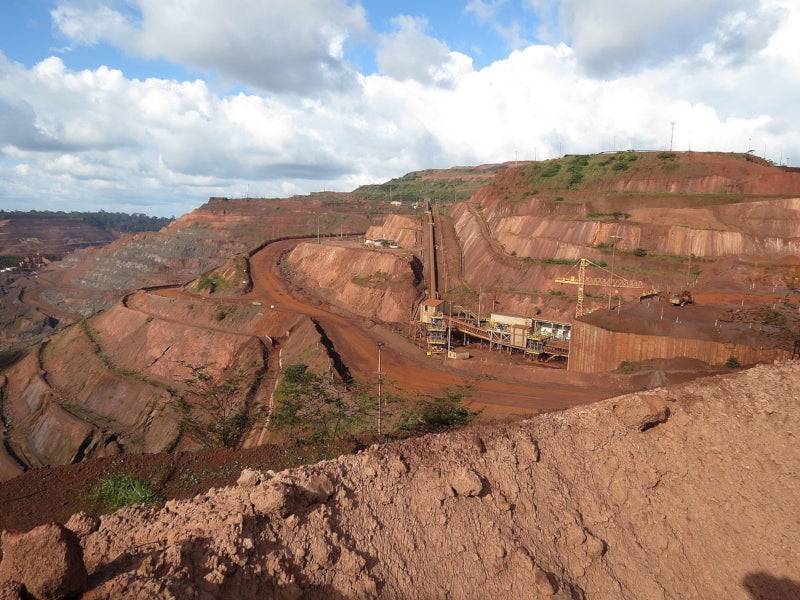Vermelho nickel-cobalt project is an open-pit mine located in Para, Brazil. Horizonte Minerals owns and operates the nickel-cobalt mine.
Pre-feasibility study (PFS) of the Vermelho project was completed in October 2019 and has estimated a development capital cost of £503m ($652m).
The Vermelho deposit is expected to produce 25,000 tons (t) of nickel and 1,250t of cobalt a year, through its anticipated mine life of approximately 38 years. The project is expected to create 1,800 jobs in the construction phase, in addition to 600 jobs during operations.
Vermelho nickel-cobalt project location, geology, and mineralisation
The Vermelho project is situated approximately 3km from Canaa dos Carajas, in the southern portion of the Carajas Mining District, Para. The site is 85km away from the Araguaia North Project in the southern part of Carajas Mining District.
The deposit comprises Vermelho 1 (V1) and Vermelho 2 (V2) hills, which are aligned on a northeast-southeast trend and overlie ultramafic bodies. The third ultramafic body Vermelho 3 (V3) is located southwest of V2 in the same trend.
The region hosts a thick profile of lateritic saprolite enriched in nickel at V1 and V2, due to tropical weathering of the ultramafic bodies.
Ore reserves at Vermelho nickel-cobalt project
The proven and probable ore reserves of Vermelho nickel-cobalt project are estimated to be 141.3Mt, graded at 0.91% Ni, 0.052% Cu , 23.1% Fe, 3.81% Mg, and 0.79% Al.
Mining at Vermelho nickel-cobalt project
Conventional open-pit truck and excavator mining method will be used at the Vermelho nickel-cobalt project, where the upper parts will be subjected to blasting. To strip waste and ore from the deposit, 4m and 2m benches will be used, respectively.
The mined ore will be forwarded to the run-of-mine (ROM) stockpile near the processing plant, while low-grade ore will be stockpiled separately for processing at a later time.
The operation is expected to recover between 2.25Mtpa and 4.5Mtpa of ROM feed and between 350,000tpa and 700,000tpa of acid, to produce 1Mtpa high-pressure acid leach (HPAL) feed. The deposit’s production capacity is anticipated to be doubled from the fourth year.
Processing at Vermelho nickel-cobalt project
Horizonte proposes to produce nickel and cobalt sulphate at Vermelho through a combination of HPAL, mixed sulphide precipitation (MSP), and cobalt solvent extraction (CoSX) processes. The process will also involve pressure oxidation leaching (POX) and crystallisation.
The ore will initially undergo beneficiation, which involves crushing, washing, scrubbing, and separation by hydrocyclones, followed by screening to separate barren-free silica from the ore.
The processing plant is capable of treating 4.34Mtpa of ROM ore, while the beneficiation plant will have a capacity of 2Mtpa. The beneficiated product will be taken to the HPAL processing plant as upgraded feed, while the MSP produced from each train will be treated in a common refining circuit.
The recovered nickel and cobalt sulphate products will be sold directly into the market. Kieserite by-product, also produced in addition to nickel and cobalt, will be sold in the local fertiliser market.
Infrastructure
Major facilities at the project will include processing plant, power line, water pipelines, and other associated infrastructure.
Contractors involved
Snowden was awarded the contract to prepare mining plans as part of the pre-feasibility study. Horizonte engaged Simulus for designing the processing plant and to provide capital and operating cost estimates for the Vermelho nickel-cobalt project.





